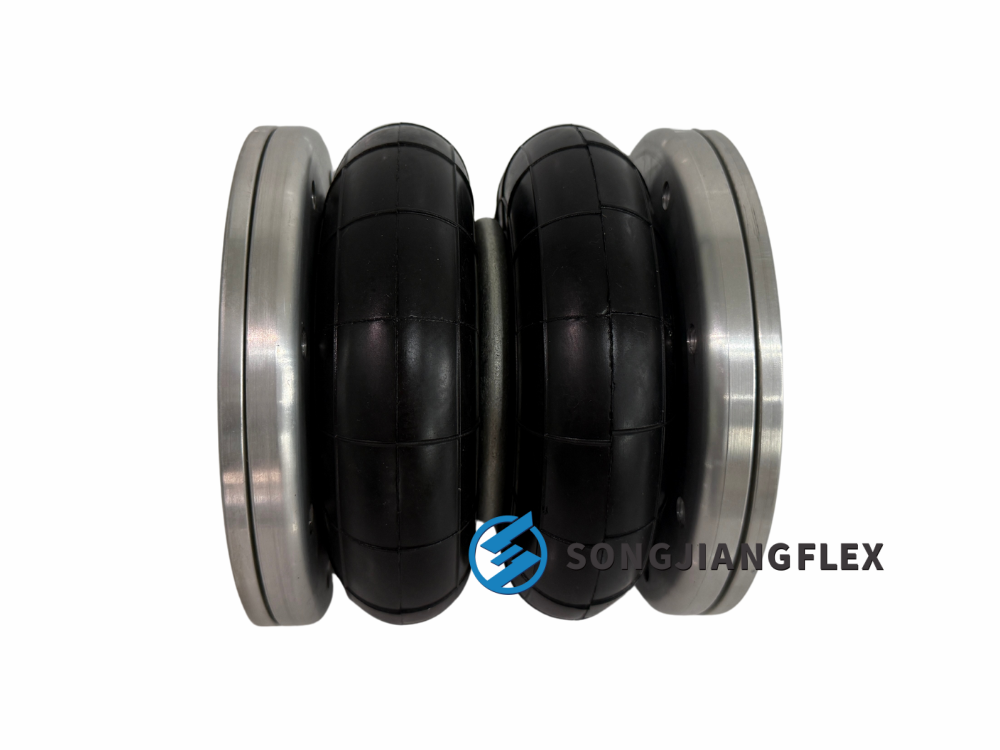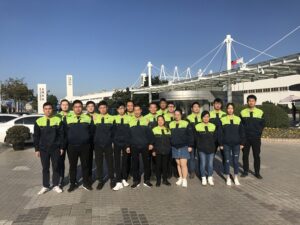What is an Aluminum Cover Rubber Air Spring?
Aluminum cover rubber air springs are essential for vibration isolation in various industrial applications. Their robust design, combining rubber and air, offers enhanced performance and durability.
Aluminum cover rubber air springs combine excellent elasticity and durability, commonly used in vibration isolation and shock absorption. Their design ensures mechanical equipment operates more smoothly, extending its service life and improving operational comfort.
Let’s explore how aluminum cover rubber air springs work and their wide range of applications.
What is an Aluminum Cover Rubber Air Spring?
An aluminum cover rubber air spring is a specialized component designed to reduce vibrations and absorb shocks in industrial machines. It utilizes a combination of rubber and air to create a flexible and durable solution for vibration isolation.
Rubber air springs feature an aluminum cover that provides additional protection and stability. This design is perfect for heavy-duty applications requiring efficient vibration isolation, such as pumps, fans, and HVAC systems.
Aluminum cover rubber air springs are used in various industries, including petroleum, chemical, and construction, to reduce the transmission of vibration and noise. They are ideal for environments where mechanical stability and long-lasting performance are crucial. These air springs effectively protect sensitive machinery from the damaging effects of vibration, leading to fewer maintenance needs and increased equipment lifespan.
How Does an Aluminum Cover Rubber Air Spring Work?
The aluminum cover rubber air spring works by using the combined elasticity of rubber and the compressible nature of air to absorb vibrations. This allows machines to operate smoothly, without transferring unwanted vibrations.
When compressed, the air inside the spring absorbs the energy from vibrations, while the rubber casing offers additional damping. This creates a stable, quiet operating environment, protecting machinery from wear and tear.
Air springs, including the aluminum cover rubber air spring, function through a simple yet effective mechanism. The rubber acts as a shock absorber, while the air chamber further dampens vibrations. Together, they offer a low-maintenance, highly durable solution for reducing mechanical impact in machines such as fans, compressors, and pumps. These air springs also help prevent the transmission of vibrations to surrounding areas, maintaining a quieter and more comfortable environment.
What Are the Benefits of Aluminum Cover Rubber Air Springs?
Aluminum cover rubber air springs provide numerous benefits, including enhanced vibration isolation, noise reduction, and increased equipment longevity. These features make them essential for a variety of industrial applications.
The primary benefit of aluminum cover rubber air springs is their ability to isolate vibrations, reducing wear on equipment and improving operational conditions. They also contribute to noise reduction, creating a quieter work environment.
By effectively isolating vibrations, aluminum cover rubber air springs protect machinery from excessive wear, reducing maintenance costs. The aluminum cover adds structural integrity, making the air spring more resistant to external pressures and harsh environments. These springs are especially useful in industries that require high-performance machinery, such as manufacturing, HVAC, and automotive industries, where reducing vibration and noise is essential for efficiency and safety.
What Are the Materials Used in Air Springs?
Air springs are made from a combination of materials such as rubber, aluminum, steel, and high-strength fabrics, each chosen for its unique properties that contribute to the spring’s durability and flexibility.
Rubber provides the elasticity needed for vibration isolation, while aluminum and steel offer the necessary strength to withstand pressure. High-strength fabrics, such as nylon, provide reinforcement, ensuring the spring remains durable over time.
The rubber used in air springs, particularly in aluminum cover rubber air springs, must be durable enough to withstand harsh environmental conditions. Steel and aluminum components are added to enhance the air spring’s structural integrity, ensuring that it can handle high loads and extreme temperatures. The combination of these materials ensures that the air spring offers long-lasting performance, even under demanding operational conditions. Additionally, the fabric layers provide extra strength, preventing wear and tear that could affect the spring’s functionality.
What Are the Different Types of Air Springs?
Air springs come in various types, including bag-type, sleeve-type, and rolling lobe designs. Each type is suited for specific applications, depending on the load requirements and space constraints.
Bag-type air springs are commonly used in automotive and industrial applications, while sleeve-type and rolling lobe air springs offer better performance for larger loads and more complex vibration isolation needs.
Each type of air spring is designed to meet different performance criteria. Bag-type air springs are generally more compact and are ideal for applications with limited space. Sleeve-type air springs, often used in heavy machinery, provide a greater range of motion and can support larger loads. Rolling lobe air springs are used in high-performance systems, offering superior vibration isolation and durability. Choosing the right type of air spring depends on the specific requirements of the equipment and the operational environment.
What is the Purpose of an Air Spring?
The primary purpose of an air spring is to isolate vibrations, providing a smoother and quieter operating environment for machinery and vehicles. This helps reduce noise, wear, and maintenance costs.
Air springs isolate vibrations from mechanical systems, preventing them from spreading to surrounding areas. This improves equipment performance and extends its service life.
Air springs are commonly used in applications such as industrial machinery, HVAC systems, and vehicles. By absorbing and isolating vibrations, they protect delicate components from damage, enhance comfort in passenger vehicles, and reduce noise pollution in industrial settings. Their primary purpose is to create a stable environment that minimizes the impact of shocks and vibrations, improving both equipment performance and the user experience.
What Are the Disadvantages of Air Spring Suspension?
Despite their benefits, air spring suspension systems have some disadvantages, such as higher costs and more complex maintenance compared to traditional suspension systems.
Air spring suspension systems require careful maintenance, as issues like air leaks or compressor failure can lead to reduced performance. The initial cost can also be higher than traditional systems.
One of the main drawbacks of air spring suspension is the need for regular maintenance to ensure the system remains operational. Leaks in the air springs can lead to performance issues, and replacing or repairing these components can be costly. Additionally, the initial cost of installing air spring systems is often higher compared to conventional suspension systems, making them less attractive for some budget-conscious industries. Despite these challenges, the benefits they offer in terms of vibration isolation and ride comfort make them a popular choice in many applications.
What is the Most Common Problem with Air Suspension?
The most common problem with air suspension systems is air leaks, which can occur in the air spring or the system’s connections, leading to a loss of pressure and reduced performance.
Air leaks are the most frequent issue with air suspension systems. They can cause uneven ride height, reduced comfort, and potential system failure if not addressed promptly.
In air suspension systems, leaks in the air springs or air lines can result in a significant loss of pressure, affecting the system’s ability to function properly. This can lead to issues such as uneven ride height or poor handling. Regular inspection and maintenance are critical to detecting leaks early and replacing worn-out components before they cause further damage. Other common issues with air suspension systems include compressor failure and problems with the control valves, which can also lead to performance issues if not addressed.
What Are the Advantages of Rubber Spring Suspension?
Rubber spring suspension systems offer several advantages, including lower cost and reduced maintenance requirements, making them ideal for a variety of applications.
Rubber spring suspensions are cost-effective, provide excellent vibration isolation, and require minimal maintenance, making them a popular choice for medium- and light-duty applications.
Compared to air springs, rubber spring suspension systems have a simpler design, which translates to lower production and maintenance costs. These systems are particularly useful in applications that do not require the high performance of air springs, such as in light-duty vehicles or smaller industrial machines. Rubber springs offer excellent vibration isolation and can operate without the need for complex controls or air compressors, making them a practical solution for many industries.
Summary
Aluminum cover rubber air springs provide efficient vibration isolation and noise reduction, extending the life of machinery and improving operational conditions. Their combination of durability and flexibility makes them ideal for a wide range of industrial applications.






